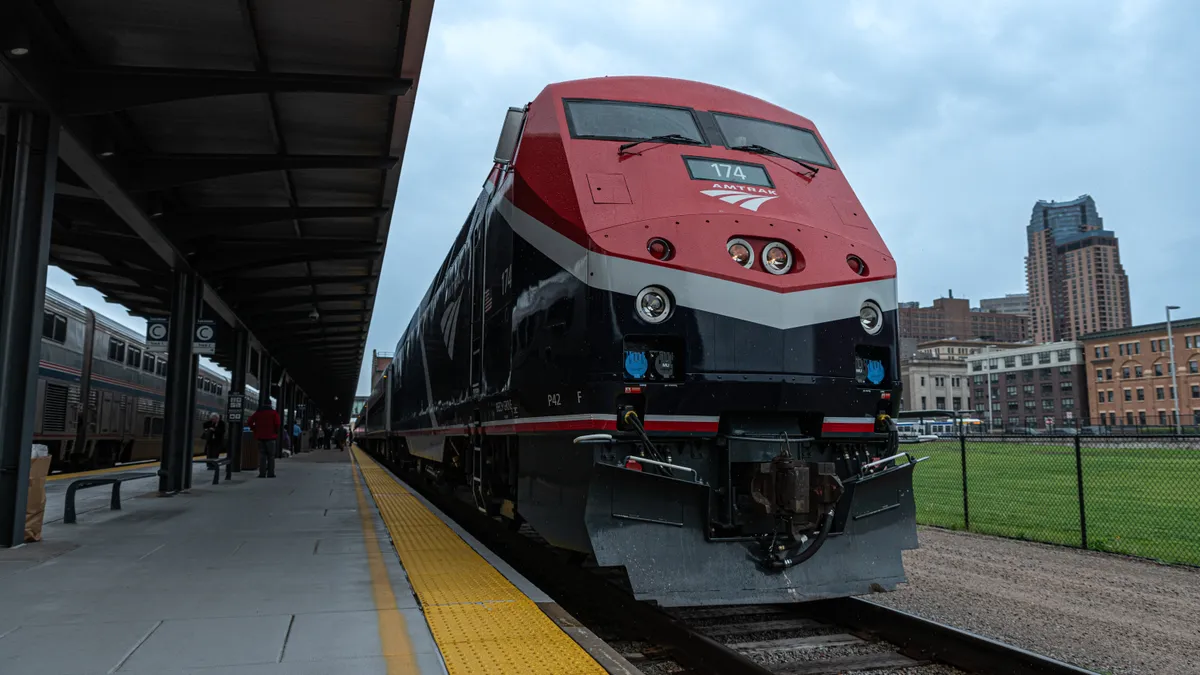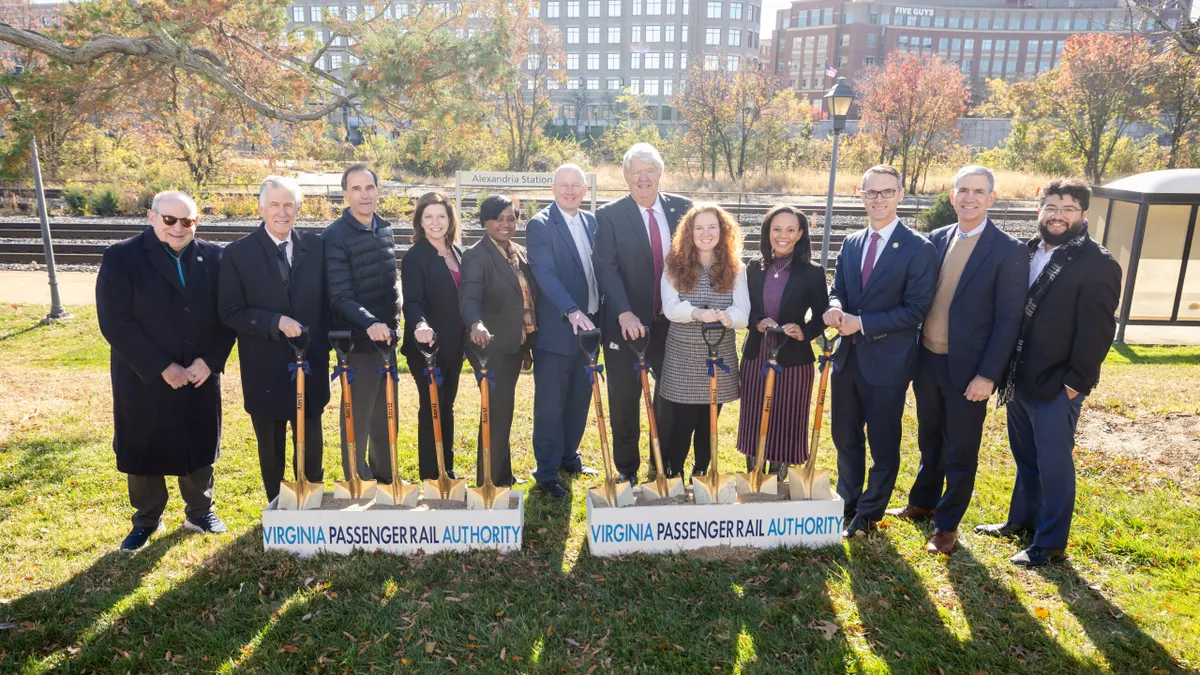The future of smart city mobility dominated the conversation at this year’s CES show. With panelists, exhibitors and attendees abuzz about the latest advancements in flying taxis, autonomous shuttles and even grocery-carrying robots, we've recapped three main mobility takeaways from the event.
1. Consumer skepticism about AVs, EVs and new driving technology needs to be addressed
Consumer demand for electric and hybrid vehicles has increased to 41% in the U.S. compared to just 29% last year, according to a recent Deloitte survey. But 48% of U.S. consumers still believe that autonomous vehicles (AVs) are unsafe.
People expect the government to provide regulations that ensure their safety, Deloitte’s auto sector leader Joe Vitale told Smart Cities Dive at CES. A clear partnership between government, cities, policymakers and automakers needs to be forged, he said. And while U.S. Department of Transportation (USDOT) Secretary Elaine Chao unveiled a new framework for AV regulation during CES, it is evident more work needs to be done.
MIT Center for Transportation and Logistics research scientist Bryan Reimer echoed this sentiment during a panel about the future of trust in mobility. "Trust is the coveted commodity," he said.
Technology providers, which include car manufacturers, need to be transparent with consumers about how their technology works, Affectiva Chief Marketing Officer Gabi Zijderveld said during that same panel. But she also posed the question: Should consumers be responsible for educating themselves about automotive technology?
It would be unfair to ask consumers to take on that task, according to Consumer Reports' Head of Connected and Automated Vehicles Kelly Funkhouser. The onus should be on the manufacturer, she said.
Consumers aren't given enough benefit of the doubt, she said. "I find that the systems that give me a little bit more information are easier for me to make my own judgment of trust."
2. Ready or not: Flying taxis are on the horizon
The hype around electric vertical takeoff and landing (eVTOL) aircrafts has many city residents and leaders scratching their heads about the feasibility of such a mobility solution.
However, all signs seem to point toward a flying taxi future. Hyundai and Uber unveiled a concept eVTOL at the show that would be 100% electric and eventually autonomous. A Hyundia executive said commercialization is likely by 2028.
U.S. residents can expect to see flying taxis — with a pilot — by 2035, Deloitte’s Aerospace and Defense industry leader Robin Lineberger told Smart Cities Dive. It’s also likely that the suburbs, not major cities, will bear the brunt of flying taxi activity. Suburban areas are less dense than cities, making it easier to build the necessary infrastructure for taking off, landing and connecting to existing mobility hubs, according to Lineberger.
But despite the fast-approaching timeline to deployment, U.S. consumers are increasingly concerned about the safety of flying taxis, according to Deloitte’s 2019 automotive consumer survey.
Forty-eight percent of consumers believe the vehicles won’t be safe, and just under half (49%) of consumers believe the vehicles would be an effective solution to road congestion, according to the survey. Those sentiments serve as a stark contrast compared to global consumer sentiments. Thirty-nine percent of Chinese respondents, for example, said the vehicles won’t be safe, and the 65% that said air taxis or passenger drones would be a viable solution to congestion.
3. Mobility should be designed for the masses, not the few
Equity was also at the forefront of mobility conversations. At a panel about autonomous public transportation, experts discussed how to prevent new mobility options like hyperloops and autonomous shuttles from being available only to the wealthy.
Currently, the projected price for a Virgin Hyperloop One trip from Kansas City, MO to St. Louis would be up to about $30, or the cost of a tank of gas, according to Ryan Kelly with Virgin Hyperloop One.
"If we are not a mass transportation system, the economics don’t work," Kelly said during a panel. "If we are a mass transportation system and we’re able to create these multi-modal nodes and get people out of their cars, then we all win. It needs to be done in an equitable fashion."
May Mobility's Alisyn Malek, however, said she is worried that autonomy could be on the path to "just being for the wealthy."
"If we think about using autonomous vehicles as the solution for everyone’s personal taxi — outside of a congestion issue — you’re leaving a lot of people behind," she said. "But if you design the system...from the start to serve many people, the economics work."
Flying air taxis, which have come under criticism for being "elitist," could also be accessible modes of transportation. But for that to happen, they need to be designed for the masses from the start, according to Bell Executive Vice President for Technology and Innovation Michael Thacker. "You have to design the system from the beginning to try to drive to a pricepoint that's accessible to more people," he said.
"I’m not going to tell you that it will be accessible to everyone because I can’t guarantee the technology will get there," he said. "But ultimately, pushing for fully electric and autonomic vehicles would help remove operating costs and make the vehicles more affordable."




















